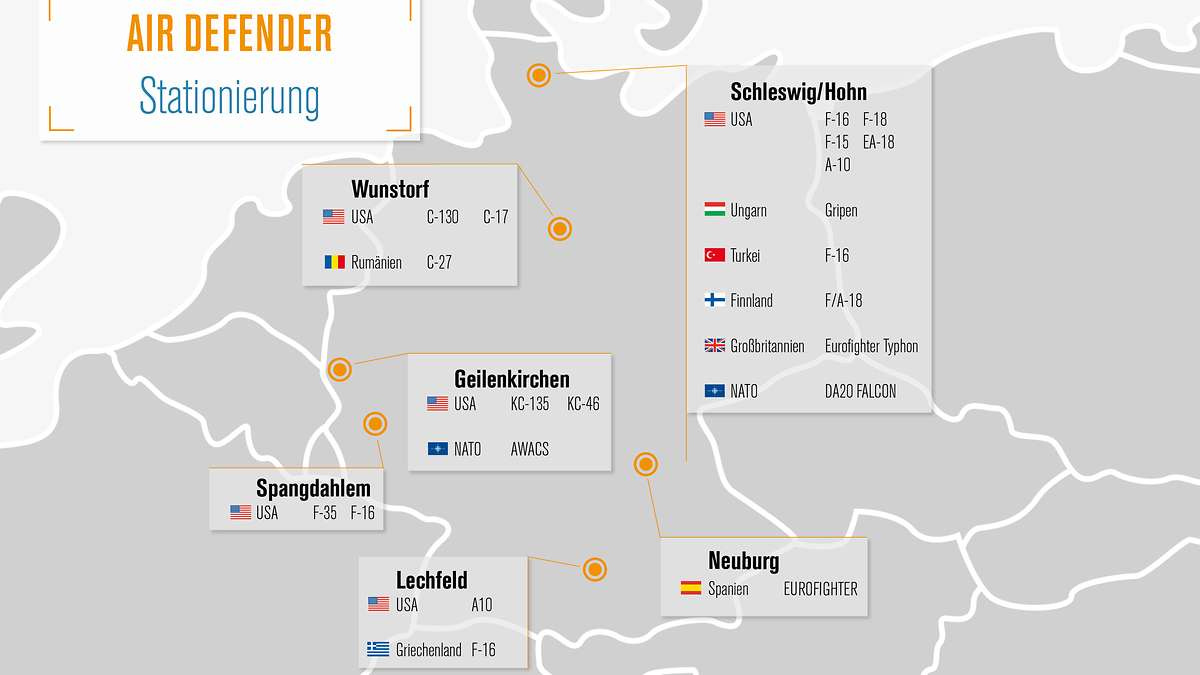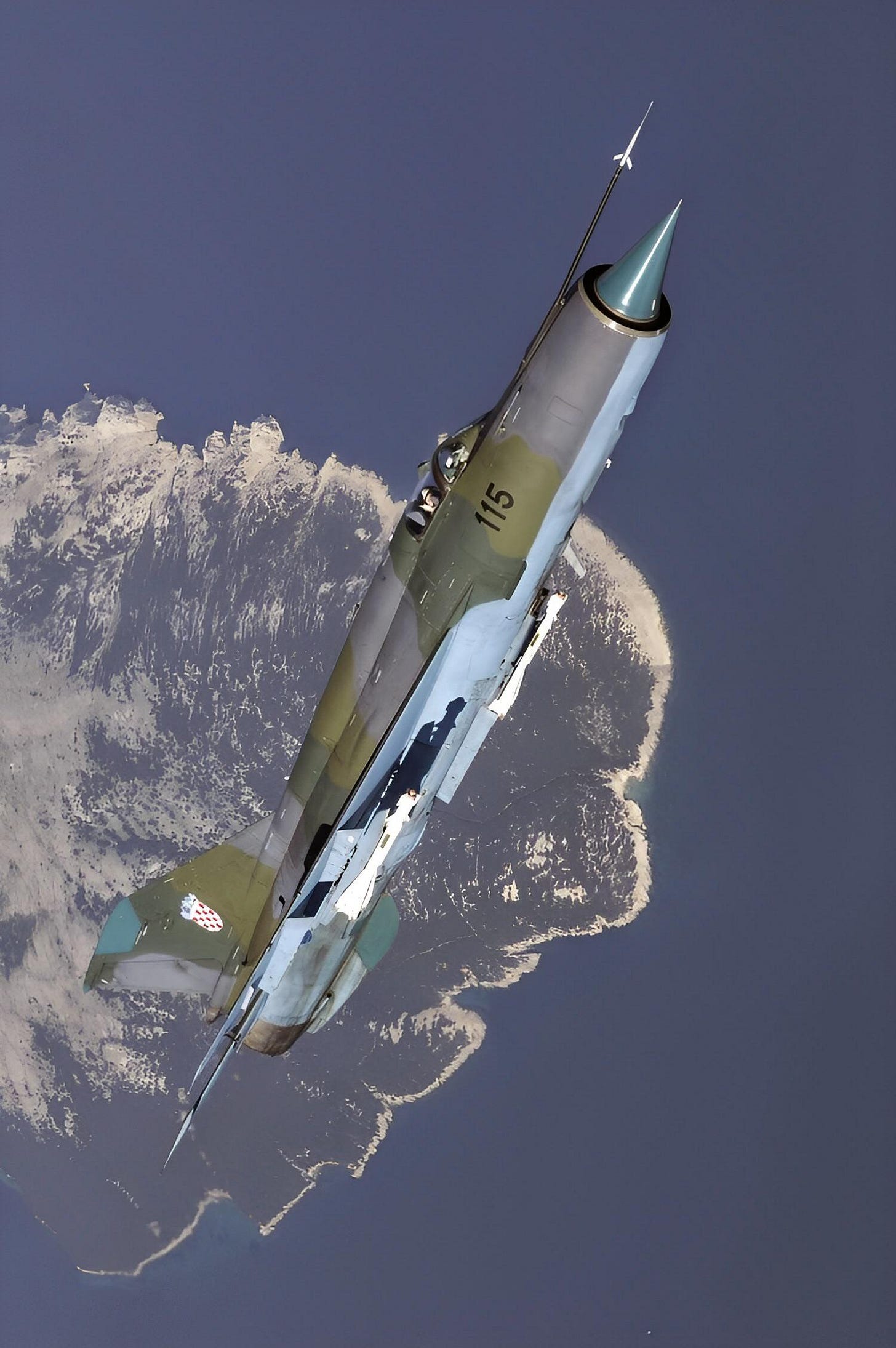
Germany is hosting NATO’s largest-ever air exercise, the Air Defender 2023, from 12th to 23rd June. The air exercise will be spread across 6 German Air Force (Bundeswehr) Bases. The bases are distributed into two sections, the front-line or the assault team, and the back-end which is for logistical and electronic warfare support. Evidently, the assault team comprises of fighter aircraft and bombers. Whereas, the back-end support has heavy transport aircraft, air-to-air refuellers, and AWACS systems. At least 25 NATO nations are participating in the Air Defender 2023. Non-NATO members but close allies Japan and Sweden are also part of the exercise. A total of 250 aircraft of 23 different types will be flying missions from Germany over NATO airspace. The U.S has deployed the largest chunk of aircraft for the exercise with over 100 plus aircraft. Over 10,000 aircrew are going to be involved in the 10-day long exercise. The exercise which has been planned for the last two years, somehow coincides with Ukraine’s spring counter-offensive, which began on the 8th of June.

Analysis
Air Defender 2023 is NATO’s strategic posturing to show support for each other in the backdrop of the ongoing Russia-Ukraine war. It is also significant to note that the massive air deployment is happening during Ukraine’s ongoing spring counter-offensive. So how does this help Ukraine? Though the exercise is largely happening in Germany, NATO airspaces that lie to the West and South-West of Ukraine in Romania and Hungary will also be utilised. In addition, NATO airspaces close to Russia’s North-West Region bordering the Baltic countries of Estonia, Latvia, and Lithuania will also be used. This means NATO will apply aerial-pressure on Russia on three fronts: North-West, South-West (near Ukraine’s airspace) and over the Russian province of Kaliningrad. Kaliningrad is sandwiched between Poland and Lithuania along the Baltic Coast. As Ukraine’s counter assault continues, high aerial activity close to its airspace and Russia’s Kaliningrad will create radar clutter for Russia. The Russian Air Force will also have to keep extra pilots and aircraft on air-interception readiness. This would take away some assets that Moscow would like to deploy against Ukraine. It is also unlikely that NATO aircraft won’t probe Russia’s air readiness. Over the 10 days, there will be many instances where Russian fighters will have to scramble to intercept NATO aircraft near the Baltic Sea. However, this will also allow Russians to track radar signatures of all NATO aircraft participating in this exercise. The S-400 unit stationed in Kaliningrad will be vital in tracking NATO’s aerial movements and collecting data on aircraft radar imagery.

During Air Defender 2023, NATO aircraft will practice Ground attack, SEAD operations, and air-to-air warfare. They will also work on improving their joint-manship and interoperability. NATO countries have deployed a large amount of ground attack aircraft, particularly the A-10s and Tornados which perform well in anti-armour roles. F-16s have been deployed in the highest numbers, followed by the Eurofighter, F-35, F-18 and F-15. Incidentally, rivals Turkey and Greece are also part of the exercise. They have both deployed F-16s, but pilots from the two countries are being stationed at different bases. However, France’s Rafales were completely missing from the exercise. Additionally, the U.S. did not deploy its most advanced air-superiority fighter, the F-22. Washington D.C. has sent a huge package of F-16, something that Moscow will be happy about. If Ukraine is to receive the F-16, then Russian Air Defences will closely monitor this exercise to track the aircraft and its capabilities. Though the exercise is a massive show of air-power, there are evident silver linings for Russia.

NATO should be commended for hosting an exercise at this scale. It shows that NATO members are staying strong and are willing to back each other if the Russia-Ukraine war spills over. The Air Defender 2023 has given NATO the chance to practice large-packaged manoeuvres which requires careful coordination of fighter units, logistics, air defence systems and various other components that constitute air-power. It should also be understood that the exercise increases bonhomie between NATO members beyond just the air. The exercise acts as a morale booster for NATO amid the uncertainty of the Russia-Ukraine war, something that is vital for NATO going forward, as the war enters its 16th month.
Short Take-Offs
Headlines from the world of aviation.
Two F-5s from the Swiss Air Force’s aerobatics display team had a mid-air collision while practicing for an upcoming show. The damaged aircraft landed back safely. However, the nose cone of one of the aircrafts broke and fell to the ground, hitting a house and injuring one person inside. The braking parachute of the other aircraft deployed mid-air, but it caused no damage and was later recovered. [Video of the collision]
A U.S. Army MH-47 Chinook crashed right after take-off in Syria. At least 22 American service members were injured in the crash. 10 of those injured received serious wounds are were flown out of Syria for treatment. According to U.S. Army Officials, one of the helicopter’s main rotor malfunctioned during take-off which led to a hard landing.
An H-120 Helicopter of the Myanmar army crashed near the country’s capital Naypyidaw. The pilot and the trainee both died in the crash. The cause of the crash was attributed to engine failure.
Still of the Week





I would like Sanjay 's view on Chinese posturing during this ex
Good one Rohan.
USAF has been running Red Flag Nellis/ Alaska since ages to train US/ NATO/ friendly Air Force pilots in close to war like situations. NATO has some very small Air Forces which cannot make a comprehensive package, or the training standards reqd for large force engagements. Therefore, this exercise would be a valuable trg model in the airspace they need to defend/ operate.
Last such large scale deployment was in Op Desert storm 1991. Generating 1000+ DMPIs per day and similar sortie generation requires smooth logistics, secure data flow, real time actionable Int/ Imagery and test the fatigue cycles for aircrew and support arms.
As you have brought out, Ruskis would watch it carefully !!!